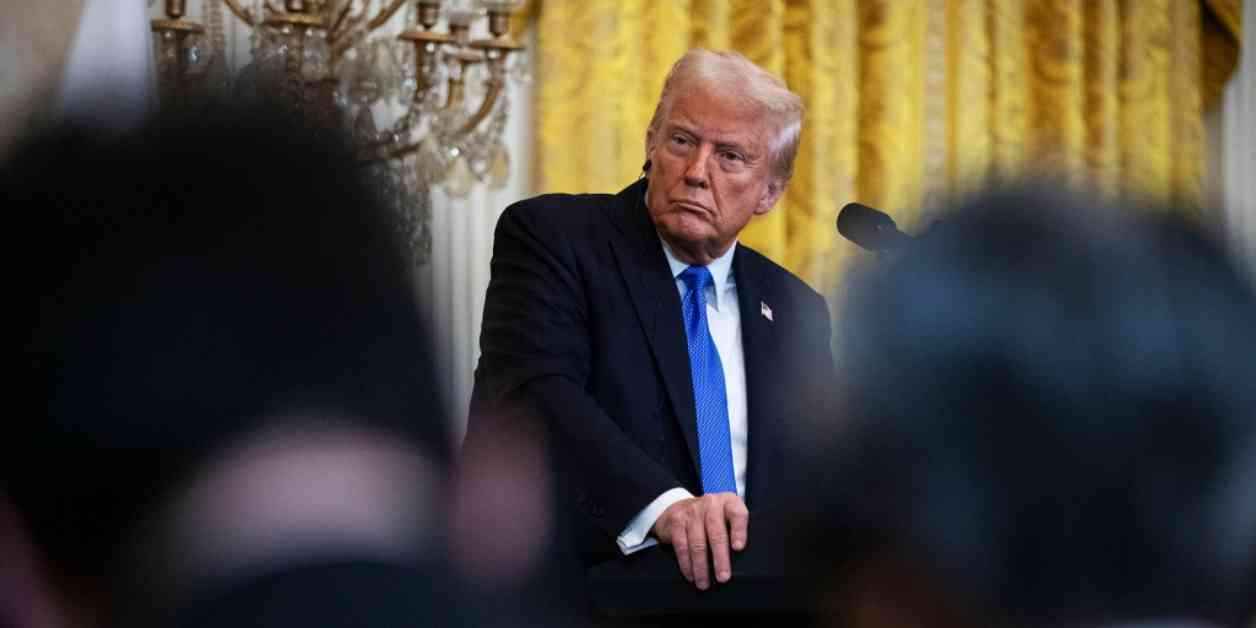Washington faces a constitutional crisis with White House officials at the center of a legal battle challenging President Donald Trump’s agenda. Recent court orders have halted key initiatives, leaving officials to contemplate their next move.
Federal Judge John McConnell’s ruling in Rhode Island underscored the administration’s failure to comply with a previous directive, hinting at potential criminal contempt. This decision, coupled with others, threatens to obstruct Trump’s plans for government restructuring, citizenship changes, and spending cuts. As Trump’s vision faces legal roadblocks, the administration is bracing for delays and potential setbacks.
The White House remains steadfast, acknowledging that legal challenges are par for the course. While some express frustration, others like Vice President JD Vance argue for the sanctity of executive power. However, the threat of a showdown looms as the judiciary asserts its authority over the administration’s actions.
Former Attorney General Alberto Gonzales warns of the consequences of defying court orders, highlighting the delicate balance of power that defines the U.S. system. With impeachment unlikely and practical constraints limiting enforcement, the standoff between the White House and the courts intensifies.
Legal experts like Laurence Tribe caution against dismissing judicial rulings, signaling potential defiance from the administration. Trump’s history of clashes with judges casts a shadow over this latest confrontation, with both sides bracing for a protracted battle of wills.
As Democrats bolstered judicial ranks during Biden’s term, the courts emerged as a formidable hurdle for Trump’s policies. Senate Democrats, led by Chuck Schumer, see the judiciary as a key line of defense against what they perceive as executive overreach. With a series of rulings blocking key initiatives, Trump’s administration faces mounting pressure to navigate legal challenges while pursuing its agenda.
The clash between the executive and judicial branches may escalate, with Musk’s Department of Government Efficiency facing temporary restraining orders and legal hurdles. The administration’s efforts to streamline government operations run afoul of court intervention, raising questions about the limits of executive power.
The judiciary’s role in curbing Trump’s ambitions echoes historical battles between presidents and the courts. From FDR’s New Deal reforms to Trump’s downsizing efforts, clashes over the scope of executive authority have shaped U.S. governance. As Trump confronts legal setbacks, the rule of law stands as a bulwark against unchecked power.
Legal experts, politicians, and administration officials offer varying perspectives on the conflict, highlighting the complexity of balancing competing branches of government. The evolving legal landscape poses a challenge for Trump’s administration, testing the limits of executive power in a system built on checks and balances.
In the face of mounting legal challenges, the administration must navigate a thorny path forward, balancing policy goals with constitutional constraints. As the courts assert their authority, the White House remains on the defensive, grappling with a legal landscape that threatens to upend Trump’s agenda. The coming days will test the resilience of the U.S. system and the resolve of those tasked with upholding its principles.
This article was crafted by seasoned journalists Peter Nicholas and Matt Dixon, with contributions from Sahil Kapur, Jonathan Allen, Ken Dilanian, and Henry J. Gomez.


